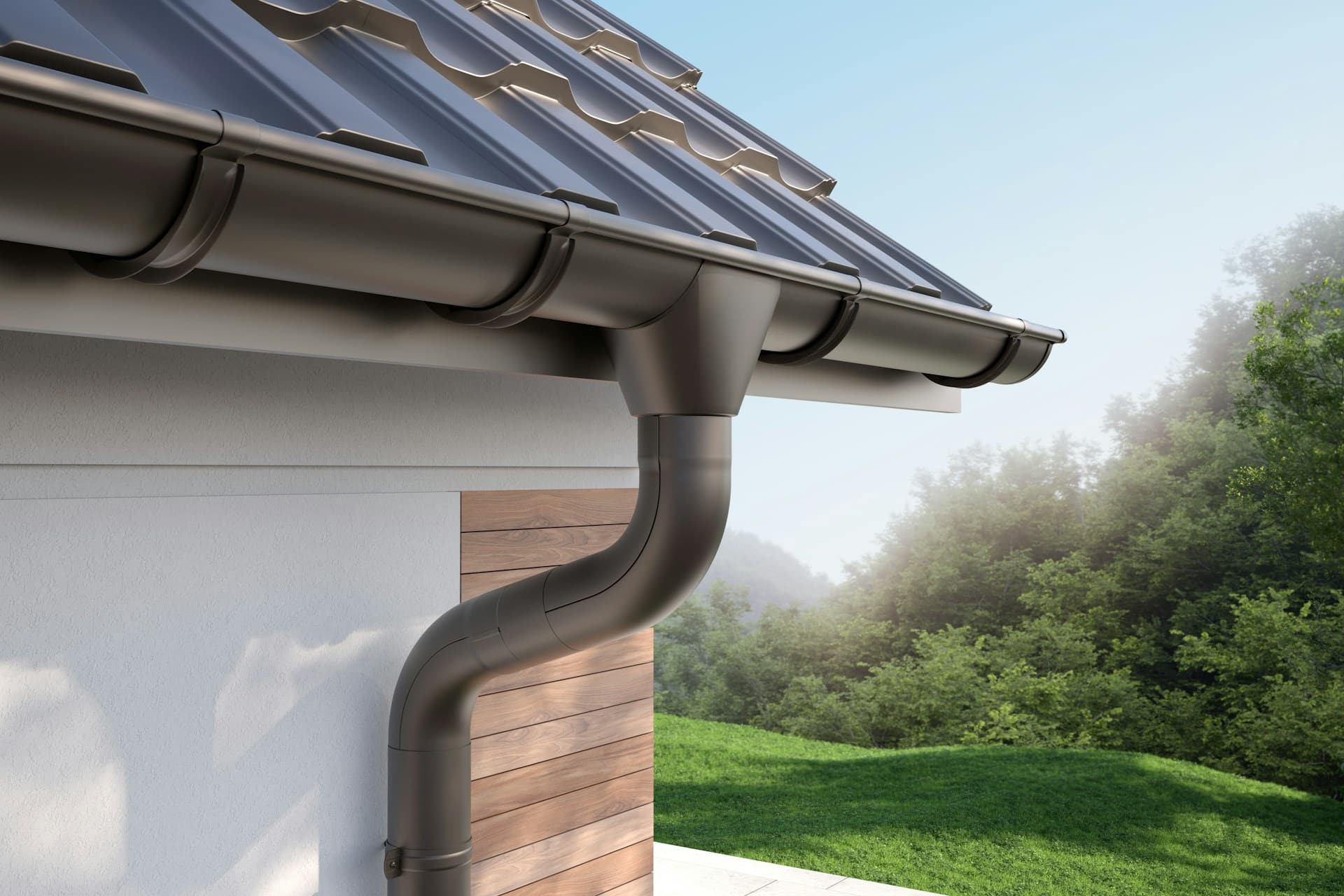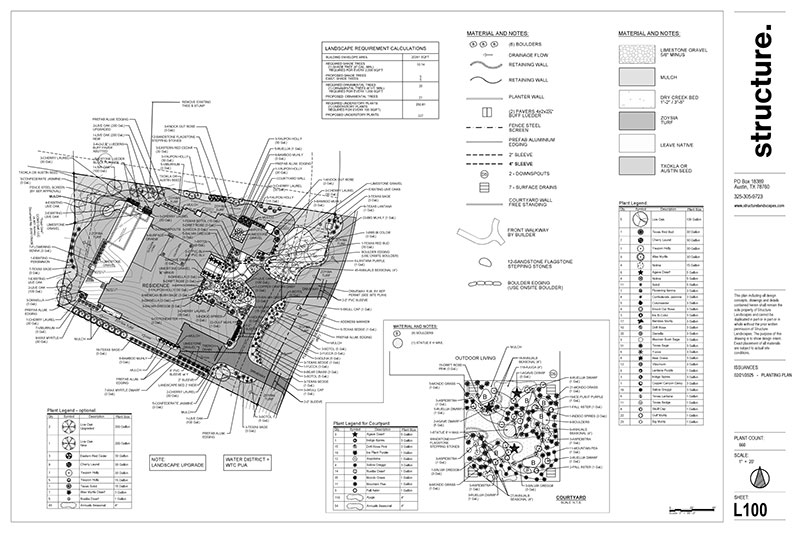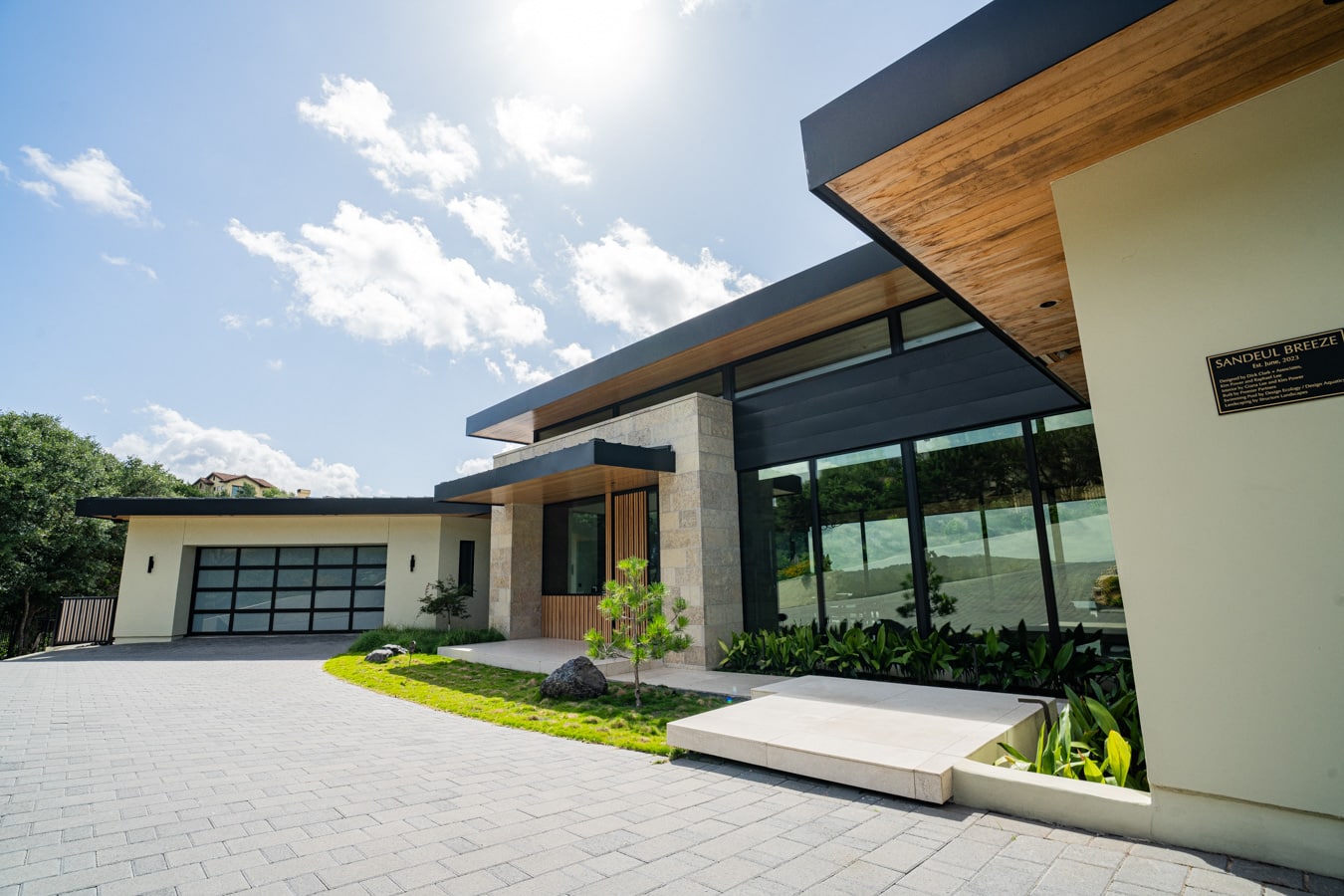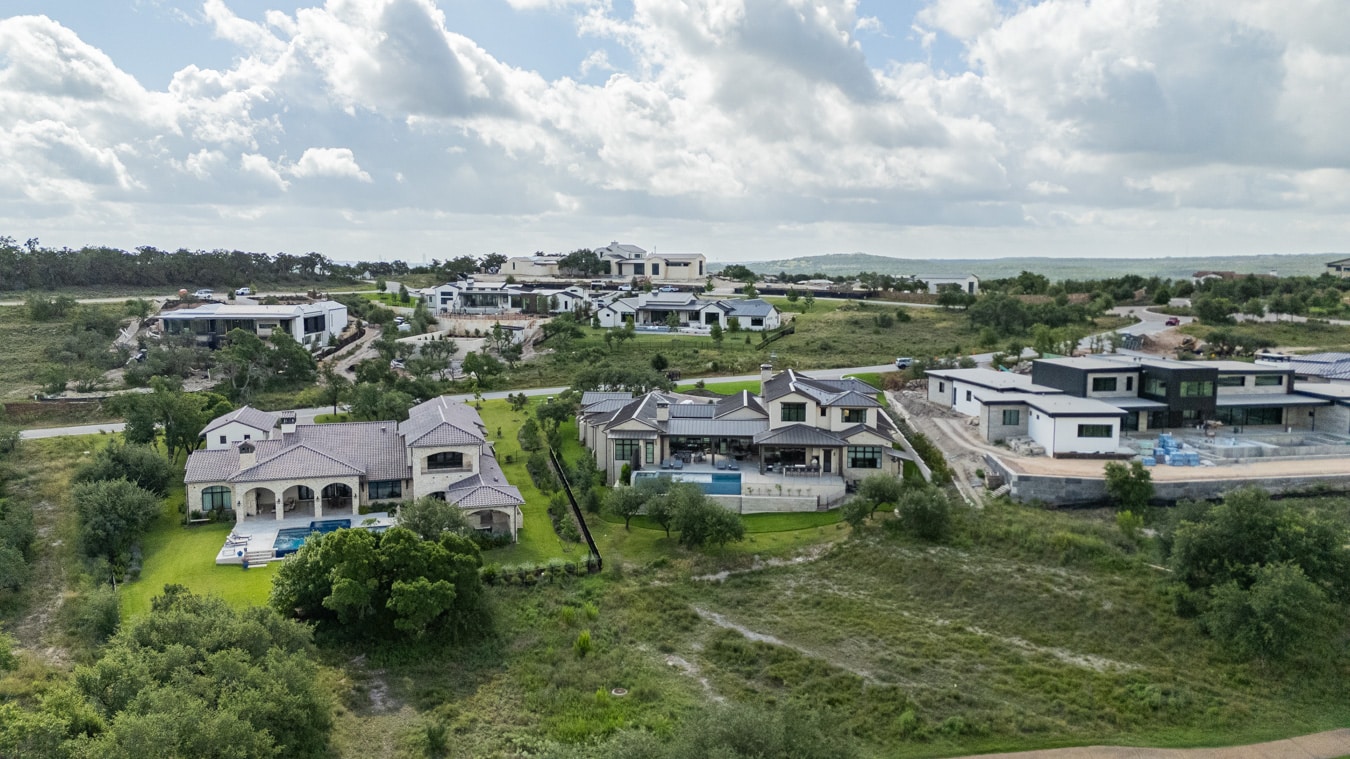Effective landscape drainage services are essential for maintaining the health and appearance of your outdoor spaces. Proper drainage prevents water accumulation, which can lead to erosion, plant damage, and structural issues in your yard. Investing in these services ensures that your landscape thrives, even in heavy rainfall.
Understanding the specific drainage solutions available helps you choose the right options for your property. From French drains to surface drains, each solution has its benefits, tailored to address different drainage challenges. Knowing how these systems work will empower you to make informed decisions for your landscape.
Choosing professional landscape and draining services also means you’re relying on expertise and experience. Our landscape architects at Structure Landscapes can assess your property’s unique needs and provide customized solutions that enhance functionality while preventing future problems. This proactive approach can save you time and money in the long run.
Understanding Landscape Drainage
Effective landscape drainage is crucial for maintaining the health and aesthetics of outdoor spaces. Proper drainage prevents water-related issues, enhances landscape design, and protects your property from erosion.
Importance of Proper Drainage
Correct drainage management helps to prevent water-related problems in your landscape. Standing water can lead to plant root rot and attract pests. It also contributes to soil erosion, damaging both your landscape and property.
By implementing effective drainage solutions, you preserve the integrity of your landscape design. This can increase property value and create a more inviting environment. Additionally, proper drainage systems enhance the effectiveness of irrigation, ensuring that plants receive adequate moisture without the risk of oversaturation.
Basic Principles of Drainage Design
Understanding the basic principles of drainage design is essential. The first principle involves evaluating the landscape’s natural shape and features. Water naturally flows downhill, so you should identify low-lying areas where water tends to accumulate.
Incorporating features such as swales, trenches, and retention ponds can effectively redirect water flow. These structures can manage excess water and promote proper drainage throughout your property.
It’s also important to use materials that encourage water absorption in your landscape, such as gravel or permeable pavers. They allow water to permeate the ground, reducing runoff and promoting healthier soil.
Common Drainage Problems and Solutions
Common drainage problems include standing water, poor surface drainage, and erosion issues. Standing water typically occurs when the existing landscape design does not account for how water collects. Installing drainage channels or modifying grading can remedy this.
Poor surface drainage may cause water to pool in certain areas. To address this, consider adding slopes or berms to direct water away from problem zones.
Lastly, erosion problems often arise in areas with intense water flow. Utilizing vegetation or applying erosion control blankets can protect soil from being washed away. These solutions help maintain your landscape and protect against future water-related challenges.
Drainage System Components
A well-designed drainage system consists of various components that work together to effectively manage water runoff and prevent flooding. Understanding each component’s role can help you choose the right drainage solutions for your landscape.
French Drains and Their Functionality
French drains are trenches filled with gravel or rock that direct water away from specific areas of your yard. They typically consist of a perforated pipe at the bottom, allowing water to enter and flow into the drain.
To install a French drain, you must determine the correct slope for efficient water movement. This system is highly effective in managing excess surface water and redirecting it to a designated drainage area, such as a dry well or a sump pit.
Key benefits include:
- Reduces surface water pooling
- Helps prevent erosion
- Minimizes water damage to structures
Catch Basins and Channel Drains
Catch basins are designed to collect excess water and debris from your landscape. They function as inlets, capturing runoff and directing it to a drainage system. Typically made from durable materials, they feature a grate that prevents large debris from entering and clogging the system.
Channel drains, on the other hand, are linear drains that manage surface water effectively. They are often used in driveways, patios, and other flat situations to facilitate water flow.
Both components work together to ensure efficient water management, preventing flooding:
- Easy to maintain
- Minimize standing water
- Enhance aesthetic appeal
Gutters and Downspouts
Gutters are essential for channeling rainwater away from your roof and toward downspouts. They collect water runoff and direct it along your home’s perimeter, reducing the risk of foundation damage.
Downspouts disperse water collected by the gutters into the ground. Adjustable downspout extensions are helpful for directing flow to an appropriate area, such as a rain garden or a drainage system.
Key aspects include:
- Protects your foundation
- Prevents soil erosion
- Available in various styles for compatibility
Selecting the right combination of these components will help ensure effective landscape drainage and protect your property from water-related issues.
Drainage System Installation
Successfully installing a drainage system involves careful planning and execution, from assessing the site to ensuring proper grading. Understanding each step helps create an effective landscape drainage solution.
Site Assessment for Drainage
Before any installation begins, a thorough site assessment is crucial. Evaluate the existing conditions of your yard to determine water flow patterns and identify any problem areas where water accumulates.
Utilize tools like a level or drainage map to assess slopes and elevations.
Take note of surrounding structures, vegetation, and soil types, as these factors influence the design and effectiveness of your drainage system. Understanding these elements helps you choose the right drainage solutions tailored to your specific site needs.
Grading and Slope Considerations
Grading is essential for effective drainage. You need to ensure that your yard has an appropriate slope to guide water away from crucial areas, such as your home’s foundation.
A slope of 2%—or a drop of 2 inches for every 10 feet—generally works well.
When planning your grading, consider landscaping features like flower beds or patios. These can affect water flow, requiring adjustments to your grading plan. Incorporating swales or berms can further manage runoff effectively.
Installation Processes for Different Drain Types
Different types of drainage systems require specific installation processes. For yard drains, begin by digging trenches based on your site assessment.
Ensure they follow the natural flow of water.
If installing French drains, lay perforated pipes in gravel-filled trenches to facilitate drainage. This method prevents sediment buildup and allows for efficient water flow.
For surface drainage systems, utilize catch basins to collect water, directing it into underground pipes. Always test the flow after installation to ensure your landscape drainage system works as intended, adjusting as necessary for optimal performance.
Addressing Yard Drainage Issues
Effective yard drainage is essential for maintaining healthy lawns and preventing water-related damage. Properly managing issues like lawn puddles and erosion will keep your outdoor space functional and attractive.
Dealing with Lawn Puddles and Low Spots
Lawn puddles often form in low spots where excess water accumulates. To address this, first, identify the areas where water collects after heavy rainfall. Adjusting the grade of your yard can redirect water flow.
Here are some approaches to consider:
Soil Grading: Elevate low spots using soil to create a more even surface.
Reseeding: After making adjustments, reseed the area to restore lawn health.
Aeration: Aerate your lawn to improve drainage and encourage better water absorption.
By implementing these strategies, you can significantly reduce puddling and improve your lawn’s overall health.
Solutions for Water Accumulation and Erosion
Excess water can lead to erosion, which damages your lawn and plants. Identifying drainage problems early is critical. Properly managing water can prevent further erosion and maintain your yard’s structure.
Consider these solutions:
French Drains: Installing a French drain can effectively channel water away from critical areas.
Rain Gardens: They absorb excess water while providing a beautiful feature for your landscape.
Mulching: Use mulch around plants to protect against soil erosion.
Each of these methods will not only manage excess water but will also promote a healthier lawn and reduced soil loss over time.
Maintenance and Repair of Drainage Systems
Regular maintenance and prompt repair of drainage systems are crucial for extending their lifespan and ensuring they function effectively. By performing routine checks and addressing issues quickly, you can prevent significant problems, such as foundation damage.
Routine Checks and Cleaning Requirements
To maintain your drainage system, schedule routine inspections at least twice a year. Look for debris, silt, and musty odors, particularly in French drains and surface drainage systems. Clear away leaves, dirt, or any obstructions that could hinder water flow.
Regularly check the condition of pipes and grates. Pay attention to any signs of rust or damage. Cleaning can be as simple as using a garden hose or specialized tools for stubborn clogs.
Consider applying maintenance techniques like scouring for pipe extensions, which can help prevent buildup. Keeping your system clean will protect your foundation and landscape from excessive water accumulation.
Identifying and Fixing Common Drainage Failures
Be vigilant in observing signs of drainage failures, such as standing water or damp spots in your yard. These symptoms can indicate blockages or improper drainage. Analyze the affected area to determine the source of the problem.
For blockages, remove debris or sediment within the system. If the issue persists, you may need to excavate and inspect the drainage system more thoroughly, especially in areas with foundation concerns.
In the case of broken or cracked pipes, replacement is essential. Temporary fixes, such as using sealants, can provide short-term relief but should not substitute for permanent repairs. Regular inspections empower you to catch these failures early, saving on costly repairs and protecting your property.
Dry Creek Beds as Aesthetic Drainage Options
Dry creek beds serve as both functional and attractive drainage solutions. They are designed to manage excess water flow while mimicking natural streams. You can utilize rocks, gravel, and natural plants to create a seamless integration with your landscape.
Benefits of Dry Creek Beds:
- Cost-Effective: They can be less expensive than traditional drainage systems.
- Low Maintenance: Once established, they require minimal care.
- Biodiversity: Attracts wildlife and supports local ecosystems.
These beds can guide water away from critical areas and prevent erosion. You can customize them to fit your design style and terrain.
Incorporating Retaining Walls and Irrigation
Retaining walls are effective in managing landscape drainage by controlling soil erosion and water runoff. When designed properly, they create level areas that can absorb more water, reducing the risk of flooding in your garden.
Key Considerations:
- Material Choices: Stone, timber, or concrete can match your aesthetic preferences.
- Height and Gravity: Make sure to account for height and the natural slope of your land to maximize functionality.
Incorporating an irrigation system with your retaining walls ensures optimal water usage. Drip irrigation or sprinklers can complement drainage features by keeping your plants healthy while preventing over-saturation.
Professional Landscape Drainage Contractors
Professional drainage services play a crucial role in maintaining the integrity of your property. At Structure Landscapes, Our expert Landscape Drainage services effectively address moisture issues, ensuring that your outdoor space remains protected from water-related problems while delivering exceptional customer satisfaction.
When you work with our team of drainage specialists, you’re partnering with experts who understand the complexities of landscape drainage systems. Utilizing advanced tools and techniques, we design, install, and maintain customized drainage solutions tailored specifically to your needs—whether it’s managing stormwater runoff, preventing erosion, or eliminating water pooling in your yard.
Our deep knowledge of local regulations ensures that your drainage system is compliant and reduces the risk of future issues, giving you confidence and peace of mind knowing your landscape is in expert hands.
Securing a Free Estimate for Drainage Work
At Structure Landscapes, we offer free estimates for all drainage projects, helping you understand potential costs with no obligation. During the estimate, our professionals thoroughly evaluate your landscape, discuss your concerns, and propose solutions that are tailored to your specific situation.
We encourage you to ask questions during this process, ensuring that all aspects of the work are covered. A detailed breakdown of our proposal helps you make an informed decision, allowing you to choose the best approach to keep your landscape healthy, vibrant, and water-damage-free.
Managing Rainwater and Irrigation
Effective management of rainwater and irrigation is crucial for maintaining a healthy landscape. By implementing appropriate drainage strategies and understanding soil composition, you can enhance water efficiency while minimizing issues like erosion and flooding.
The Impact of Soil Composition on Drainage
The composition of your soil plays a vital role in how rainwater is absorbed and drained. Clay content affects water retention and drainage speed. Soils rich in clay can lead to slow drainage, increasing the risk of water pooling and potential flooding.
In contrast, sandy soils allow water to drain quickly but may require more frequent irrigation. Understanding your soil type helps you make informed decisions regarding drainage solutions and irrigation frequency.
Consider conducting a soil test to determine composition. This insight guides your landscaping choices, enabling you to select plant types that thrive in your specific soil conditions.
Frequently Asked Questions
Addressing landscape drainage can help prevent water-related issues in your yard. Below are common questions that can guide you in understanding the specifics of drainage services.
How can I identify if my yard has poor drainage?
Signs of poor drainage include standing water after heavy rain, waterlogged soil, and frequent wet spots. You might also notice erosion or puddles forming in low spots of your yard. A musty smell in landscaped areas can indicate water retention issues.
What are the key components of an effective landscape drainage system?
An effective drainage system typically includes components such as French drains, catch basins, downspout extensions, and pipe systems. These elements work together to direct excess water away from your property. Proper placement and sizing are crucial for optimal performance.
How is the cost of installing a new drainage system around a home determined?
The cost can vary based on several factors including the size of your property, the complexity of the drainage system, and the materials used. Labor costs and potential excavation work also contribute to the overall expense. You should obtain multiple estimates for an accurate assessment.
What methods are most effective for improving yard drainage?
Common methods include installing French drains, utilizing dry wells, and building swales. Aerating the soil and adding organic matter can also enhance drainage. Choosing the right combination of techniques depends on your yard’s specific needs.
Can landscape grading enhance the drainage efficiency of my property?
Yes, landscape grading can significantly improve drainage by directing water flow away from your home. It involves reshaping the ground to create a slope that facilitates proper water runoff. Proper grading helps prevent water accumulation in low areas.
What maintenance should be expected for residential landscape drainage systems?
Regular maintenance involves clearing debris from drains and ensuring that your system is functioning properly. You should inspect for clogs and check that pipes are not damaged. Seasonal checks can help prevent major issues and extend the life of your drainage system.
At Structure Landscapes, we specialize in providing top-quality landscape drainage solutions in Central Texas, tailored to meet your property’s unique needs. To learn more about our drainage services or to schedule a consultation, give our team a call at (512) 461-0290, and we’ll provide all the information you need!





